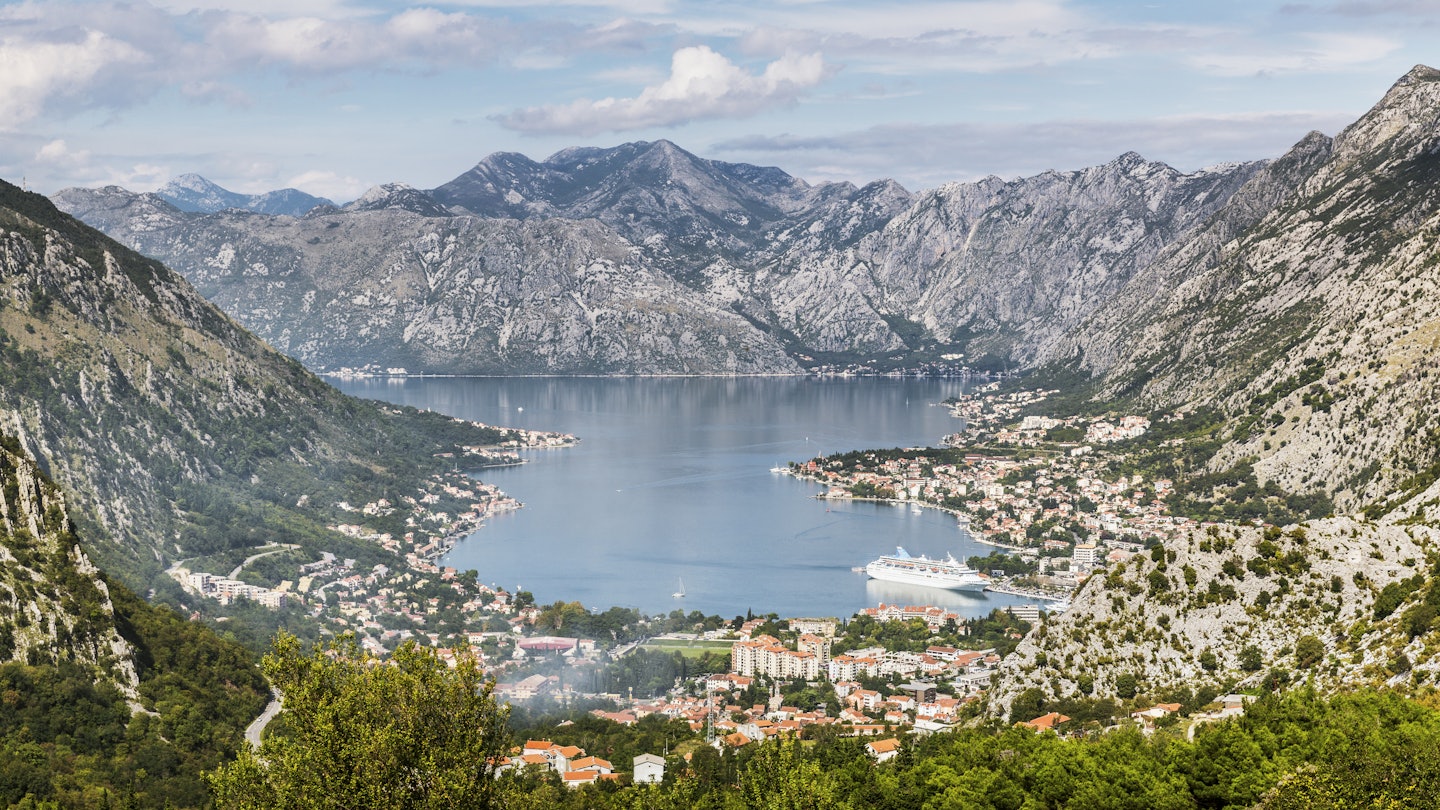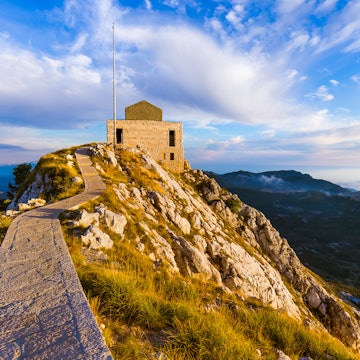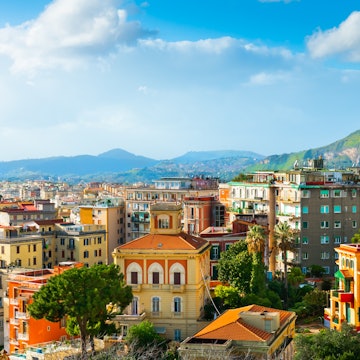
Ultimate travel list: Lonely Planet's top sights in the world (41 to 50)
Aug 17, 2015 • 6 min read

Montenegro's Bay of Kotor. Julian Love / Lonely Planet
The most mind-blowing sights on the planet come in a vast array of forms – from urban wonders like the colourful, cobbled streets of old Havana to epic works of nature like the plains of the Serengeti.
The must-see places in this final instalment of our series on the top 50 sights of Lonely Planet's ultimate travel list demonstrate just how diverse our world is. All the more reason to get out there now!
41. Pompeii, Italy
The dark, looming cone of Mt Vesuvius seems awfully close indeed. As you wander the eerily well-preserved alleyways of this ancient city, you can’t help but keep looking back to that volcano – all 1280-still-active-metres of it. Its last cataclysmic eruption occurred in AD 79. And they reckon Vesuvius is likely to have a really big blowout about every 2000 years... Do the math. It certainly adds a frisson to exploring Pompeii, the unlucky spot that suffered the brunt of Vesuvius’ incendiary ire back in the 1st century.
Pompeii itself is a marvel. The city was probably founded in the 7th century BC, and became a fashionable holiday spot on the Bay of Naples. When the volcano went boom, thousands perished, and Pompeii was entombed under a layer of lapilli (burning pumice stone) for over a millennia – a moment-in-time capsule of Roman life, albeit buried in horrific circumstances.
42. Habana Vieja, Cuba

Habana Vieja – old Havana – is the closest you can come to stepping into a sepia-tinted vintage photograph: stroll along cobbled streets, past pastel buildings and vintage cars.
The atmospheric decay makes it a hit with photographers, but this is no mausoleum. Walk the alleys at night and see Cubanos dancing to the radio and playing dominos. With the opening of relations between Cuba and the US, modernisation will become rapid.
43. Table Mountain, South Africa

Other cities have signature buildings or manmade monuments, Cape Town has its own mountain. Watching clouds accumulate on Table Mountain’s plateau, between Lion’s Head and Devil’s Peak, and then spilling over its sides – a phenomenon known as the tablecloth effect – is a bankable travel moment.
You can catch a cable car up, but it’s better to earn the panorama across South Africa’s most vibrant city towards the Cape of Good Hope. Various routes take you to vantage points. The classic climb follows Platteklip Gorge, in the footsteps of António de Saldanha, whose first recorded ascent was in 1503. To reach the top, aim for 1088m-high Maclear’s Beacon, just above the Upper Cableway station.
44. Old Town Square, Czech Republic

If you’ve ever wondered what it would be like to tumble into the pages of a Hans Christian Andersen fairy-tale, just step into Prague’s Old Town Square. In this pedestrian-packed medieval market place, ornate frontages rise up on all sides like pieces of gingerbread and heels click on cobbles that have seen nearly a millennium of footfalls. As the setting for Prague’s famous astronomical clock – a madcap creation from 1410 – the square is visited by almost everyone, but that doesn’t diminish its sense of timeless wonder. There are busking jazz bands and concerts, political meetings and fashion shows, plus Christmas and Easter markets, all watched over by a brooding art nouveau statue of Jan Hus.
45. Serengeti National Park, Tanzania

No other park in the world spawns such a magnificent wildlife spectacle. It starts on the plains of the Serengeti, where wildebeest are born between January and March. Together with their herds they number 1.5 million, and come late April they start ’The Great Migration’ – a 3000km, eight-month round trip to the Masai Mara. Watching it all from the sidelines are some of Africa’s greatest safari species: lion, elephant, rhino, giraffe and buffalo.
46. Hermitage, Russia

One of the oldest and most comprehensive museums in the world, the Hermitage is a superlative-defying assemblage of priceless artistic masterpieces and architectural marvels. Originally commissioned by Catherine the Great (a self-confessed art ’glutton’) in 1764 to store her private collection, the museum now lays claim to a staggering three million items.
Housed in the gilded-green Winter Palace and five adjoining riverside buildings – all of them imposing and imperious – the Hermitage’s labyrinthine halls and rarefied rooms teem with treasures spanning the ages. Under the museum’s roofs are everything from Egyptian antiquities to contemporary installations and more Old Masters, Impressionists, post-Impressionists, Fabergé eggs and invaluable icons than you can shake a paintbrush at.
47. Bay of Kotor, Montenegro
Geologists may quibble over whether the Bay of Kotor is the only fjord on the Mediterranean, but with a landscape this charismatic, who really cares what you call it. In the many twists and turns of the bay, rugged mountains of lavender-grey scree tumble down to a coastal fringe of olive and pomegranate trees above a limpid opal sea. Whether you are kayaking around rocky coves, sailing across to islands topped with monasteries or trekking into the craggy hinterland, you will be far too captivated by your surroundings to worry about how to classify it.
48. Jaisalmer, India

When the magnificent desert fortress of Jaisalmer finally fell to invading armies, its female inhabitants committed mass suicide while its warriors rode out to certain death; anything was better than the dishonour of being captured as a slave. So sure, the Rajputs of Jaisalmer were certainly a proud people, but when you look at their glorious sandstone city, you’ll realise they had a lot to be proud of.
Even after four centuries, their honey-coloured fortress still rises from the sandy plains like a mirage, encircled by 99 mighty bastions. Inside, the beautiful structure is a crazed tangle of tiny lines, complete with graceful havelis (merchants’ houses) and ancient temples that almost collapse under the weight of all the carvings and statuary. No place more successfully evokes the romance of Rajasthan.
49. Ngorongoro Crater, Tanzania

The rim of Tanzania’s Ngorongoro Crater is not just one of the world’s largest intact volcanic calderas, but a place where every arriving visitor faces a dilemma – should I stay, or should I go? Staying is tempting as the views into the crater become more and more spellbinding the longer one looks. The fertile floor far below, hemmed in by dramatic escarpments hundreds of metres tall, is decorated with swamps, forests, Lake Magadi and swathes of savannah grasses. The fact everyone eventually pulls themselves away reflects nothing negative about the view, but rather the sheer riches of what lies beneath.
The concentration of wildlife on the Ngorongoro Crater floor, particularly of lions and other large predators, is unparalleled anywhere else in Africa, and it remains one of the planet’s very best places to see black rhino in the wild.
50. Hiroshima Peace Memorial Park, Japan

What was once ground zero for the world’s first nuclear attack is now a green expanse, home to numerous memorials – a peaceful place to wander and reflect. The ruins of the only structure to survive the bombing, Genbaku Dome, still stand as a blunt reminder of the devastation.
The Pond of Peace is the park’s central feature and leads to the cenotaph, a curved monument displaying all the names of known victims. Emotions run high on a visit here, but with sadness also comes hope in the human spirit.
Work your way to the top spot, starting with contenders 31-40. View the complete list of the 500 best sights on the planet in our new title Ultimate Travel, which is available now in Lonely Planet's shop and where books are sold.












